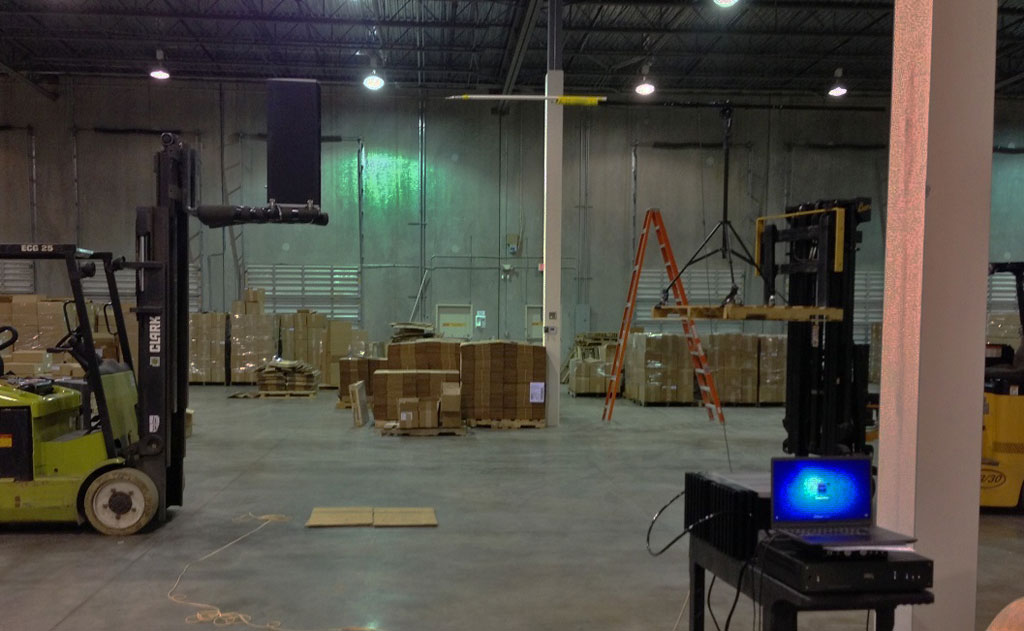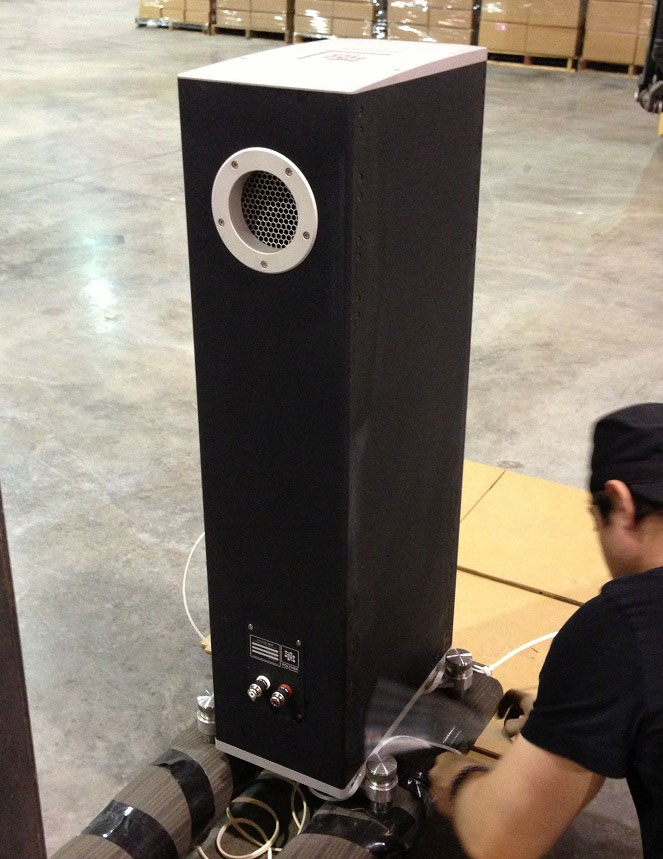LB: As your company names indicates, the material you use for your cabinet is a polymer. Without giving away any trade secrets, can you tell us a bit more about it?
DK: The main material used is a metal alloy that is combination of various metals. This alloy has zero ringing modes, several times greater stiffness than aluminum, and incredible structural rigidity. It is actually in every way a theoretically ideal cabinet, something that is rarely encountered in any device. For example, just the front baffle of our MKS-X speaker system weighs approximately 130 lbs, which is heavier than some fully assembled floor standing speakers than are double the size of the MKS-X. If you want to experience what a completely inert construction can do, this is the speaker to listen to.
LB: Suppressing cabinet resonance requires appropriate outer materials, but also proper internal bracing. How are the cabinets braced? Does computer modeling aid this process? And in a related question, are there separate chambers for the various drivers?
DK: The cabinets are extensively braced with braces that are bolted to each of the 4 panels. We have techniques that insure that the bracing system remains fixed for the lifetime of the product with no possibility of any bolts coming lose. The braces are painted with a damping compound and wrapped with absorbing materials. There are multiple chambers for various drivers also with absolutely over-the-top construction. For example, the enclosure that houses the mid-bass driver is machined from a solid billet of metal instead of multiple panels bolted together. Certainly it is not possible to design a cabinet of this complexity without computer modeling.
LB: Turning now to the drivers, you use a diamond tweeter and diamond midrange. I know of a few high quality speakers that use a diamond tweeter, but diamond midrange drivers seem much rarer. My first question is, why diamond? And second, from whom are the drivers sourced?
DK: The only reason why diamond midrange drivers are very rare is because they are insanely expensive. When you go from a tweeter dome to a midrange cone (let’s say from 1” to a 2” diameter) the cost does not double or increase slightly as most people would expect. The cost increases exponentially due to the difficulty of manufacturing these cones.
Diamond is a simply a dream material for loudspeaker engineers because it has the highest possible stiffness of all materials that currently exist, thus allowing the cone to behave as a theoretically ideal piston. All other cone materials lose pistonic motion, especially at high frequencies. This cone deformation causes the cone to add its own sound (much like a resonating cabinet does) making it impossible to hear what’s really on the recording and therefore to accurately reproduce instruments as they might sound live. Diamond changes everything. It has no sound of its own and it will perfectly reproduce the excitation of the voice coil without altering the waveform.
We make sure to describe the cones as “pure diamond” because there are many other companies out there that claim they use diamond tweeters and other drivers when in reality these cones are just diamond coated which is completely different from a single piece of crystal diamond. Heavy industry has been using diamond coating for many years, like the manufacturing of diamond coated tools which make the tool work more efficiently and last longer. But it is a very inexpensive process (a drill bit can be diamond coated for just $20) and does not produce the kind of result or anything close to the stiffness of pure diamond.
LB: Bass response is highly dependent in cabinet design, and, per Hoffman’s law, is a tradeoff between extension, cabinet size, and efficiency. How have you approached bass in your speakers?
DK: Bass is the one variable in speaker design most dependent on trial and error. At frequencies below 200Hz the room stops being a reflective environment and the room becomes part of the loudspeaker rather than separate from it. The interaction is very complex. In addition, the tuning and system Q are not described by any specific set of optimal parameters. On paper it may seem that having an extremely powerful motor is ideal and that it would lead to the best transient response, however, clearly the woofer can quickly become overdamped which would produce a very disappointing response. So typically it is about finding the most optimal balance which cannot be done without a lot of trial and error. Let’s also not forget that all woofers load the room in a different way, so the way a 12” woofer would load the room is completely different from the way a 6” would even if they have the same alignment and extension.
Basically there is much more at play than extension, cabinet size, and efficiency. We also give a lot of consideration to the construction of the moving system and its compliance because we want the loudspeaker to produce high resolution and dynamic bass even if played at very low volume as opposed to many speakers that have quality bass only when played loud.
In addition, our bass is tuned in such a way that the speaker does not have to be positioned close to side or rear walls to achieve very deep extension, which of course allows the speaker to be positioned optimally for the best imaging.
LB: Some might describe the crossover as the speaker’s “brain.” Please tell us about your crossovers.
DK: I have a lot to say on this subject because crossover design is the one area where we have achieved the most innovation. Our crossovers are a huge leap over anything else in use today that we are aware of.
First, our crossovers do not have a single resistor anywhere. Most designers would be scratching their head how this could be possible in a 2-way monitor, much less a complex 4-way system like the MKS-X. To my knowledge this has never been done before.
Our overall approach to crossover design is to pursue two opposing parameters – the highest possible complexity and the highest possible simplicity – simultaneously. The complexity is the result of using steep filter slopes which we feel is essential but we also obsess with minimizing crossover component count. Many people characterize our speakers as having a remarkably live and natural sound and a lot of this has to do with maintaining the most direct signal path possible. We will literally spend weeks looking for a creative way to eliminate yet one more capacitor or inductor from the circuit while preserving the target transfer function. The result has been nothing short of remarkable. Our midrange circuit, a bandpass filter with a 4th order high-pass and low pass function consists of a total of 4 parts, a circuit which would typically require 10 – 12 parts. This is also achieved with perfect time alignment of every driver in the system.
There is also no question that high order, steep filters is the only way to achieve the illusion of live music in the home because only these filters achieve an even horizontal radiation pattern. As reflections bounce off the walls, floor, and ceiling and arrive at your ear delayed in time the reflected sound energy needs to have mostly the same content as the original wave launch, because this is exactly what happens with live instruments. Of course low order filters have the advantage of fewer parts and therefore have greater “purity” but our technology already does exactly that while retaining the high order filter function. It’s really the best of both worlds.
Well anyway Larry, you heard our MKS-X speakers and I am sure you recall the absolutely seamless integration between drivers and absolute freedom from electronic artifacts. When done this way and combined with extreme execution in all other parts of the design it is possible to come very close to live.
- ← Previous page
- (Page 3 of 4)
- Next page →


